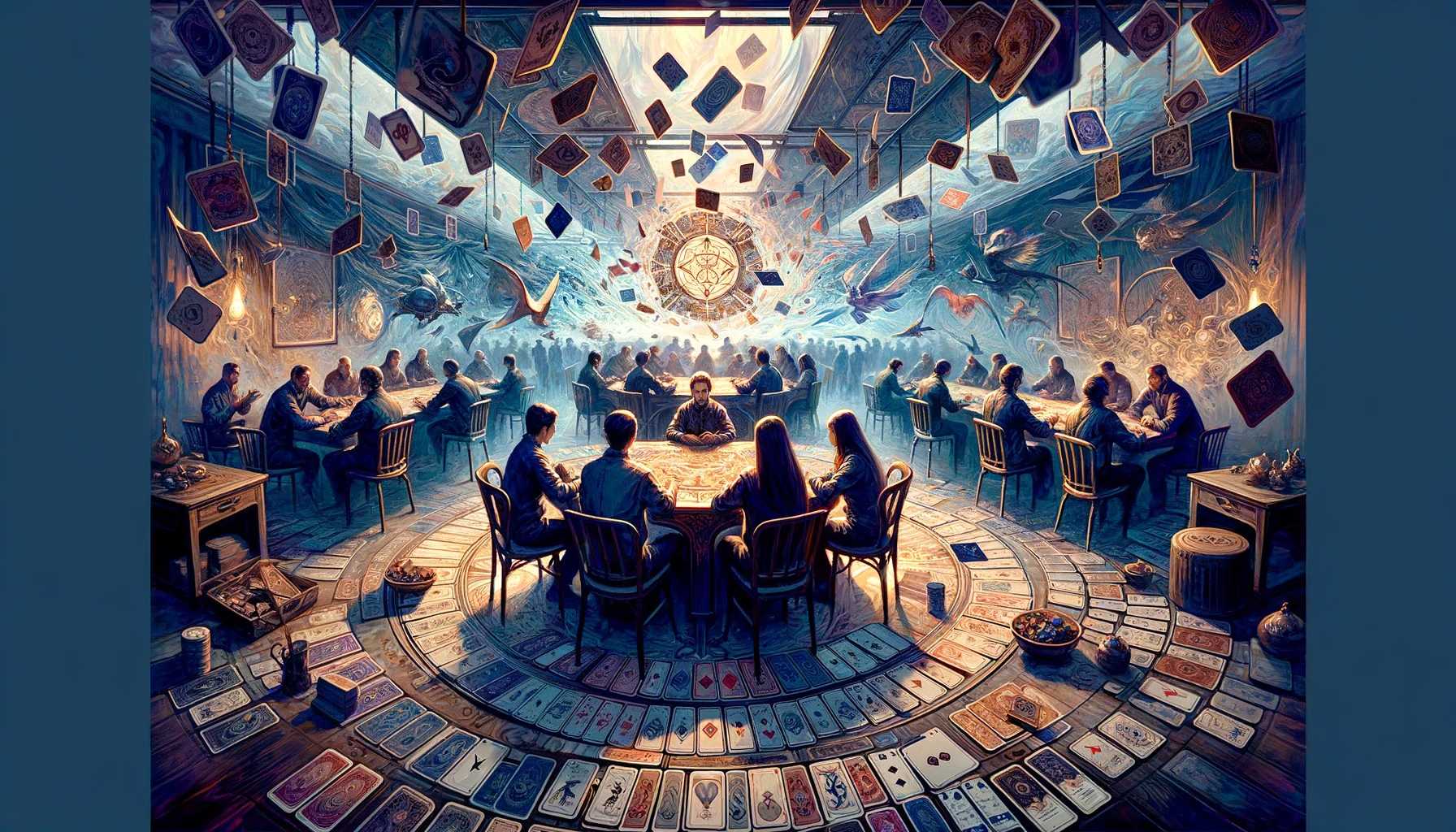Introduction
In the captivating realm of card games, where strategy meets chance, one element stands as the linchpin of an enthralling experience – balance. It's the delicate equilibrium between skill and luck, strategy and spontaneity, that transforms a card game from a mere pastime into a riveting pursuit. In this blog post, we'll delve into the multifaceted world of card games, exploring why balance is not just a fleeting notion but an indispensable aspect that elevates the entire gaming experience. So, shuffle those cards, find a comfortable seat, and let's unravel the importance of balance in the intricate tapestry of card games.
1. Skill vs. Luck: The Dance of Duality
At the heart of every engaging card game lies the dynamic interplay between skill and luck. Striking the right balance between these two elements is akin to orchestrating a dance where players move seamlessly between calculated strategies and the unpredictable twists of fate. A game that leans too heavily on luck may leave seasoned players feeling frustrated, while one dominated by skill alone could alienate casual players seeking a touch of unpredictability.
2. Inclusivity and Accessibility
Card games have an inherent charm in their accessibility – a quality that resonates with players of all ages and backgrounds. A well-balanced card game embraces inclusivity by ensuring that both seasoned veterans and newcomers can find enjoyment. A game that accommodates varying skill levels encourages social interaction, making it a delightful pastime for friends and family gatherings.
3. Strategic Depth and Complexity
The allure of card games often lies in their strategic depth. Balance allows a game to maintain a delicate equilibrium where strategic nuances can thrive without overwhelming players with unnecessary complexity. A well-crafted card game offers layers of depth, inviting players to explore intricate strategies without losing sight of the fundamental enjoyment of the game.
4. Engagement and Emotional Investment
A balanced card game captivates its players by fostering emotional investment. Whether it's the anticipation of drawing that crucial card, the thrill of executing a well-laid strategy, or the camaraderie of a surprise comeback, emotions are the lifeblood of a memorable gaming experience. Balance ensures that players remain engaged, their emotions woven into the fabric of the game's unfolding narrative.
5. Adaptability and Replayability
Card games that stand the test of time possess a unique quality – adaptability. A balanced game allows for diverse strategies and outcomes, ensuring that each playthrough is a fresh experience. This adaptability contributes to the game's replayability, inviting players to return to the table with enthusiasm, knowing that each session holds the potential for new discoveries and challenges.
6. Fair Competition and Sportsmanship
In the spirit of healthy competition, balance is the linchpin that upholds fairness and sportsmanship. A game that is well-balanced ensures that victories are earned through skill and strategic acumen rather than arbitrary advantages. This fosters a sense of accomplishment for winners and encourages players to refine their skills for future games, promoting a positive and respectful gaming community.
7. Evolution and Expansion
Card games, like any form of entertainment, evolve with the times. A balanced game serves as a sturdy foundation for expansion and innovation. Game designers can introduce new cards, mechanics, and expansions without jeopardizing the delicate equilibrium. This allows card games to stay relevant, exciting, and adaptable to the evolving tastes and preferences of players.
8. Feedback Loop and Iterative Design
The process of creating a balanced card game is an iterative journey. Feedback from players becomes a crucial component in refining and enhancing the game's balance. Designers can adjust rules, card abilities, or mechanics based on player experiences, creating a dynamic feedback loop that fosters continuous improvement and innovation.
9. Community Building and Social Connection
Beyond the cards and strategies, card games serve as a conduit for building communities and fostering social connections. A balanced game provides a shared experience for players to bond over, creating lasting memories and connections. Whether it's a casual game night with friends or participation in organized tournaments, the balance of the game enhances the sense of community among players.
Conclusion
In the grand tapestry of card games, balance emerges as the unseen maestro orchestrating a symphony of skill, luck, strategy, and emotion. It is the force that transforms a collection of cards into an immersive experience, where players are not just participants but protagonists in their own gaming narratives. As we shuffle the deck and draw the next hand, let's celebrate the delicate dance of balance that turns each card game into a timeless and enriching pursuit. Here's to the joy of gaming, the thrill of a well-played hand, and the enduring magic that balance brings to the captivating world of card games. May your decks be diverse, your strategies be cunning, and your gaming experiences be ever-balanced!
